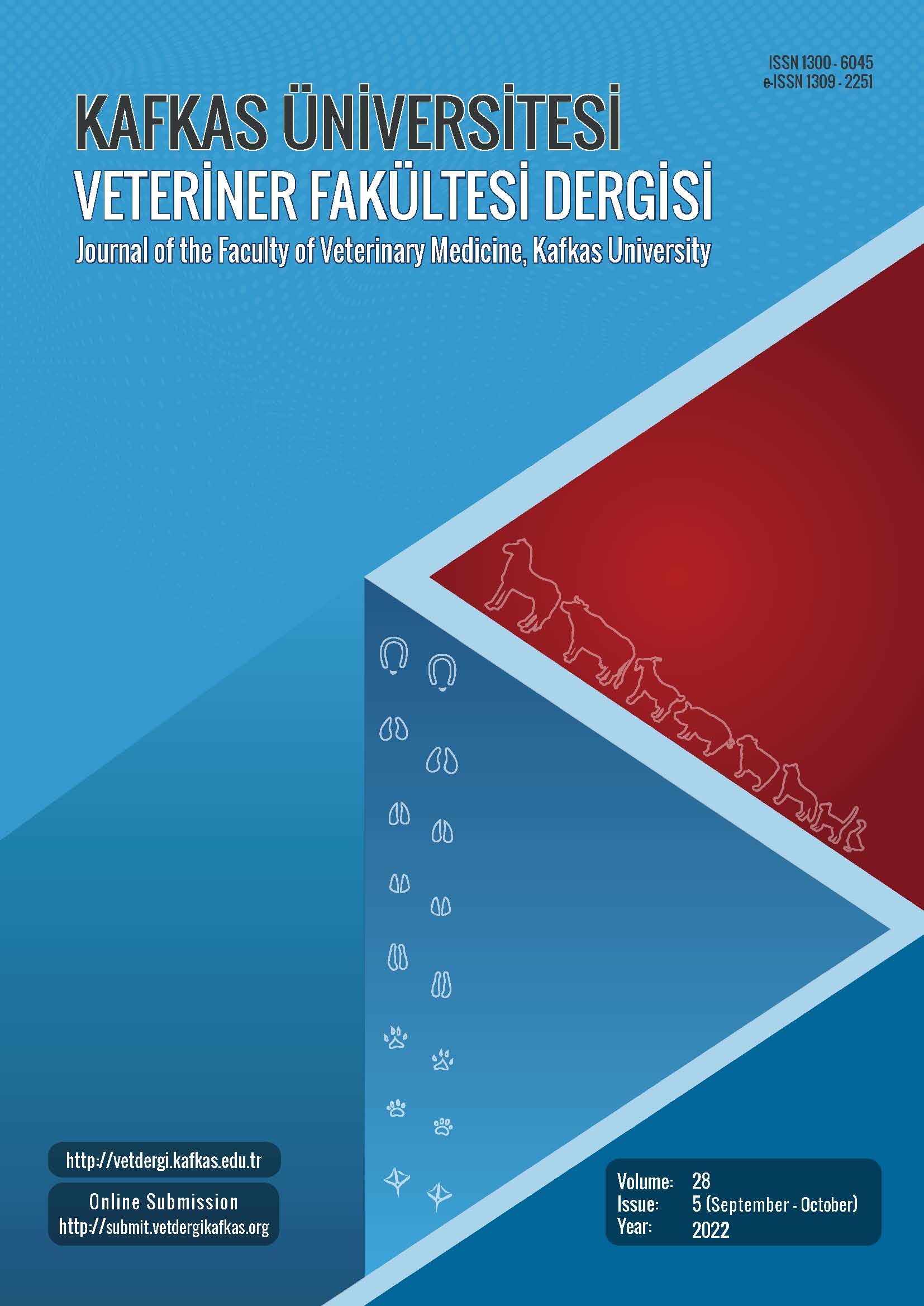
This journal is licensed under a Creative Commons Attribution-NonCommercial 4.0 International License
Kafkas Üniversitesi Veteriner Fakültesi Dergisi
2022 , Vol 28 , Issue 5
Morphometrical Analysis of the Egyptian Mongoose (Herpestes ichneumon) Hind Limb Bones (Pelvis, Femur, and Crus) Using Th ree-Dimensional Reconstructed Images
1Cukurova University, Faculty of Ceyhan Veterinary Medicine, Anatomy Department, TR-01930 Ceyhan/Adana - TÜRKİYE
DOI :
10.9775/kvfd.2022.27964
Th e Egyptian mongoose (Herpestes ichneumon) is on the International Union for Conservation of Nature"s Red List of Th reatened Species,
and very little information is available on its morphometric characteristics. Th is study aimed to create the three-dimensional (3D) reconstruction of
the pelvis, femur and crus bones in the hind limb of the Egyptian mongoose using two-dimensional multidetector computed tomography (MDCT)
images, perform morphometric measurements on these models, and compare these measurements to other Carnivora members described in the
literature. For this purpose, MDCT was performed on the hind limb bones of two adult mongooses (one male, one female) who died as a result of
traffic accidents at diff erent times and were brought to the anatomy laboratory, and the data were stored in the DICOM format. Th ese images were
transferred to a computer with 3D reconstruction soft ware Mimics 14.1 loaded, and the reconstruction of the hind limb bones was undertaken.
Some morphometric measurements were performed from the 3D models of the pelvis, femur and crus bones. Also, cortical thickness, endosteal
and periosteal diameter values of the femur and tibia were measured using MDCT images. According to the results, the measurements of the male
mongoose were larger than those of the female mongoose, except for the angle of arcus ischiadicus. Th e Egyptian mongoose was found to have a
minor form among the members of the order Carnivora. It is expected that the morphometric measurements revealed as a result of this study will
contribute to the knowledge concerning wild animals and guide future clinical studies.
Keywords :
Carnivora, Mongoose, Morphometry, Th ree-dimensional reconstruction, Wild animal










